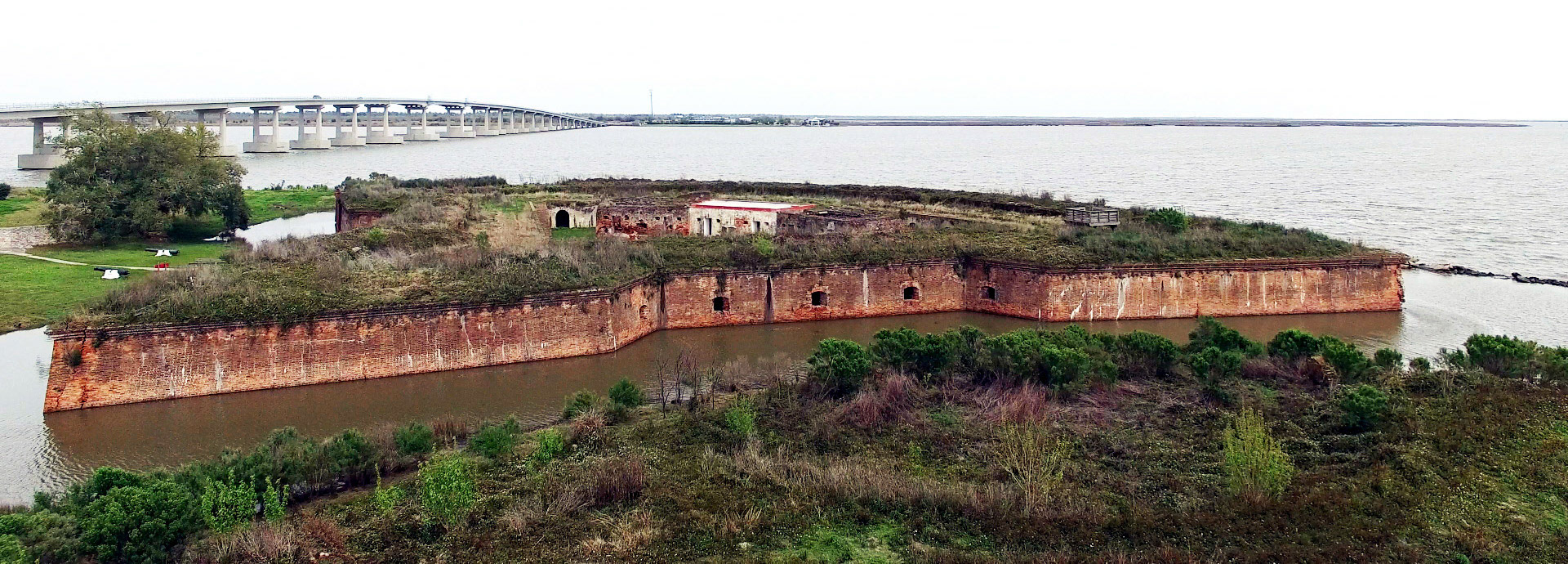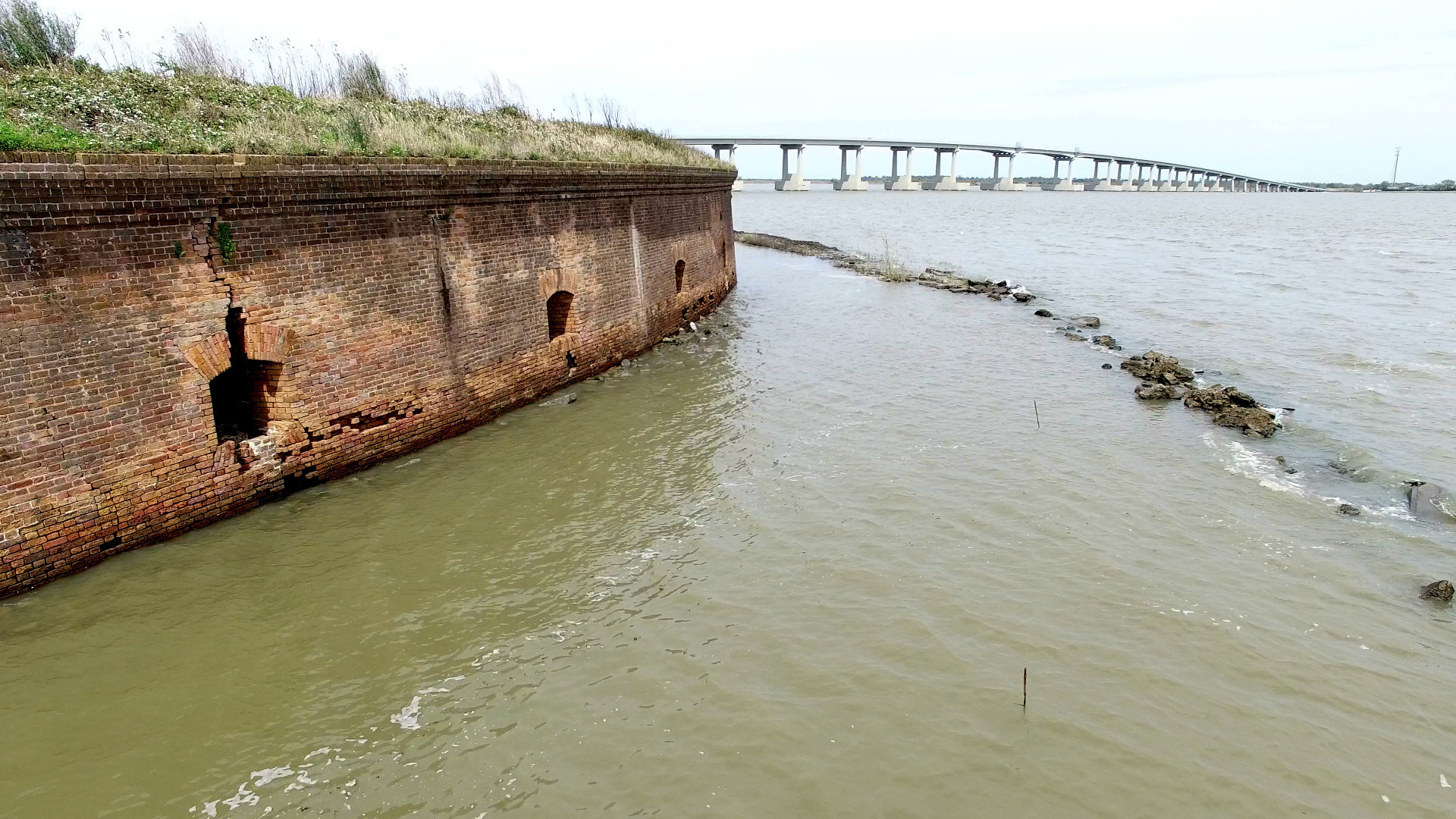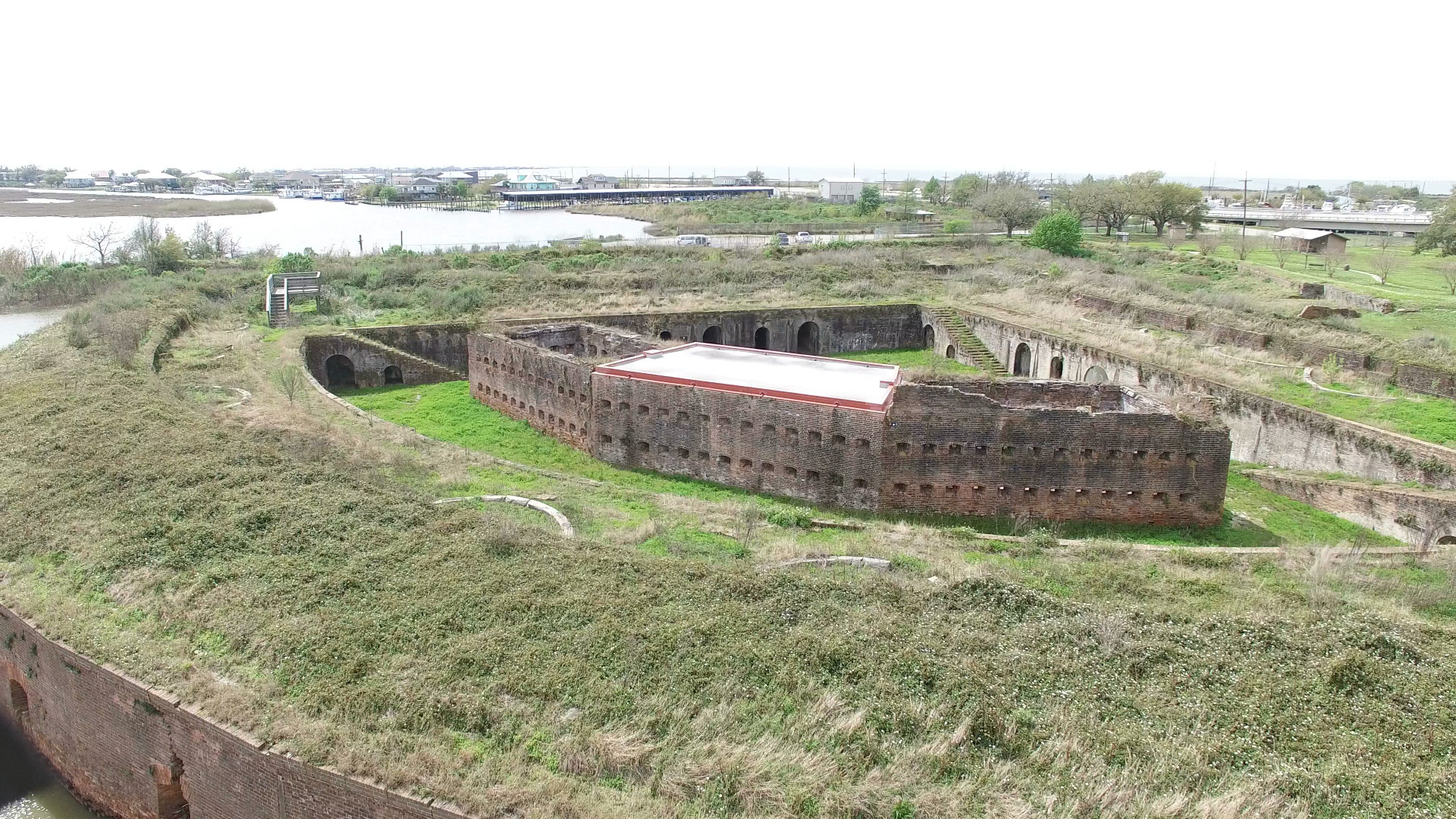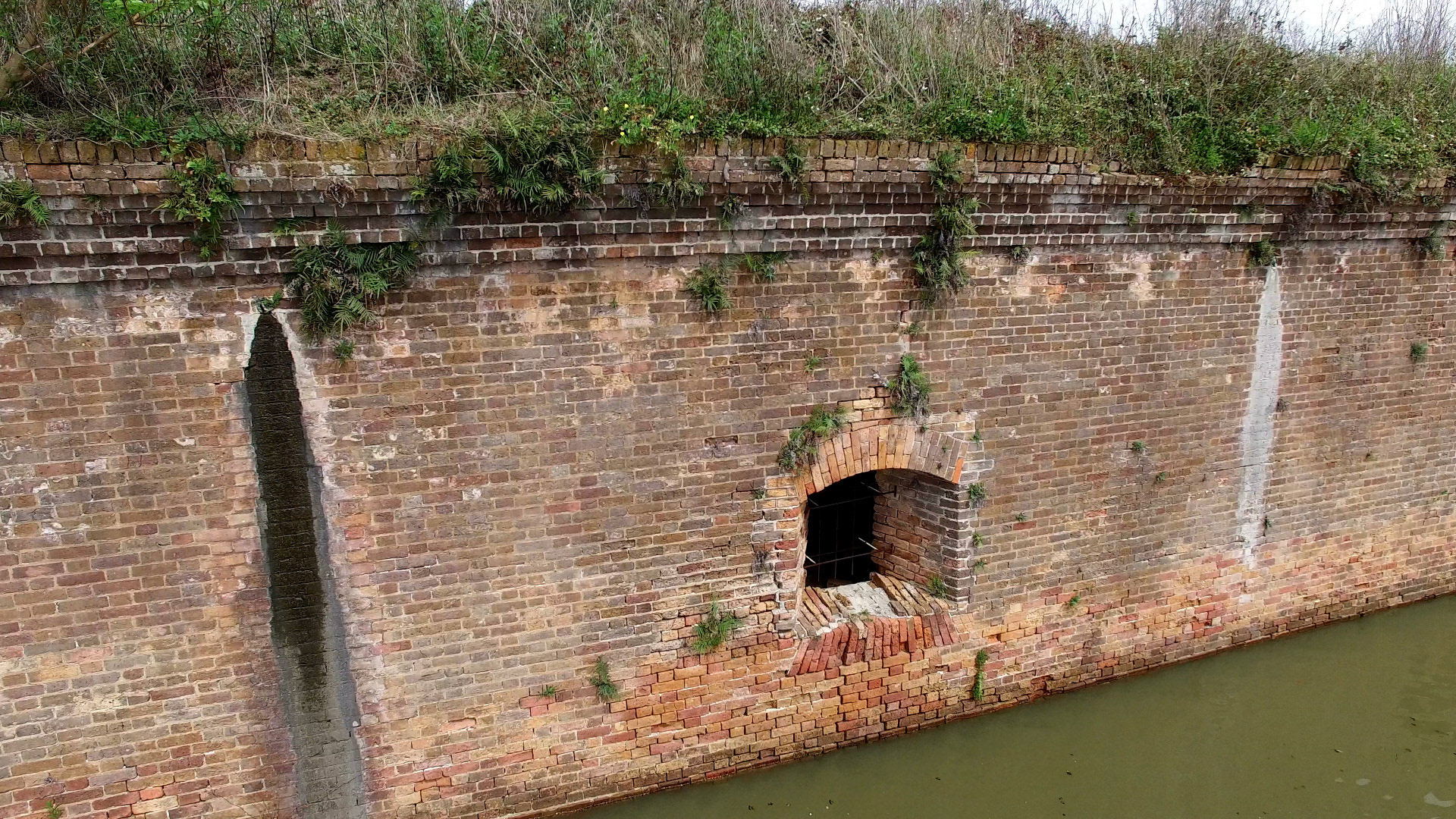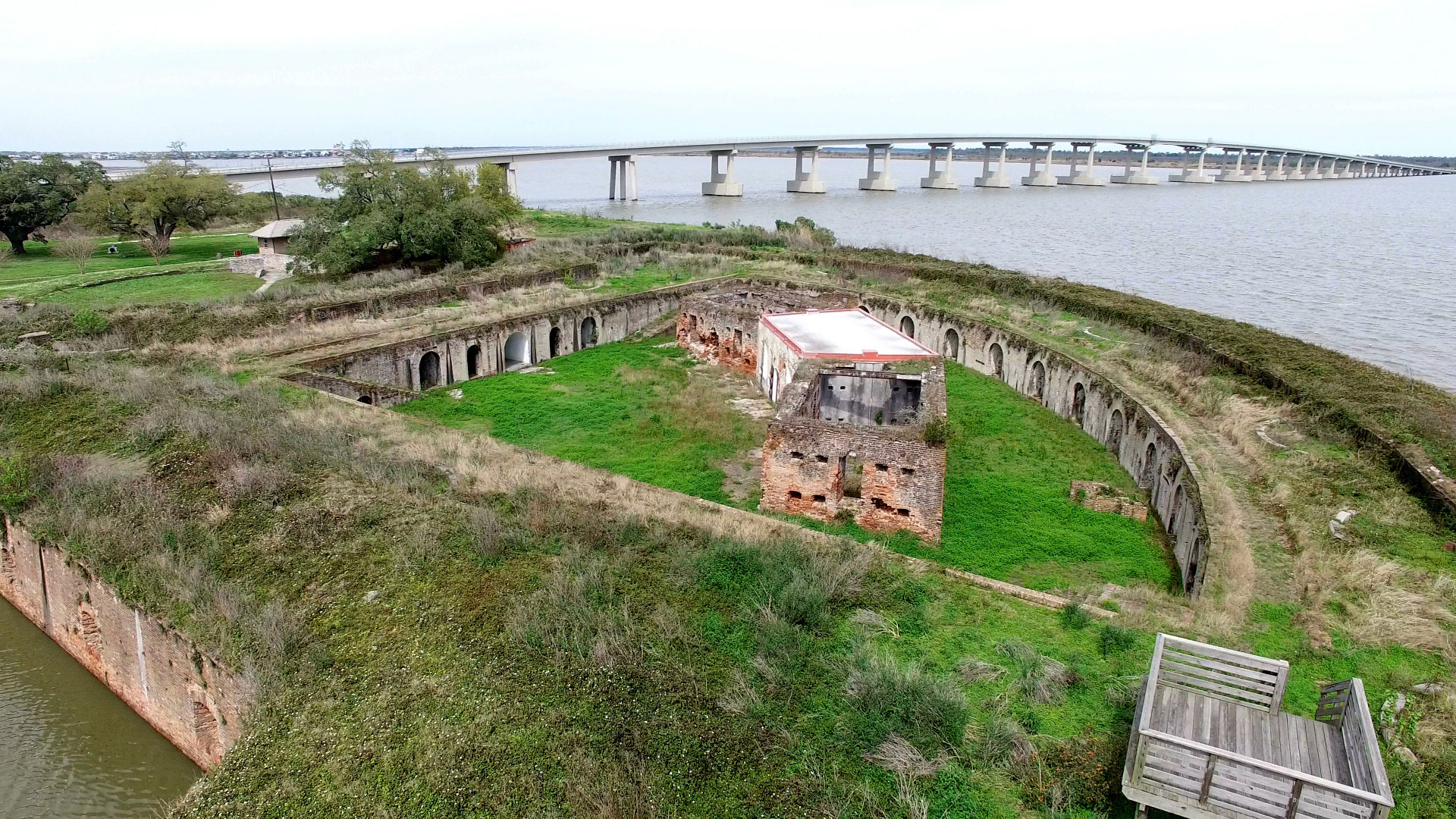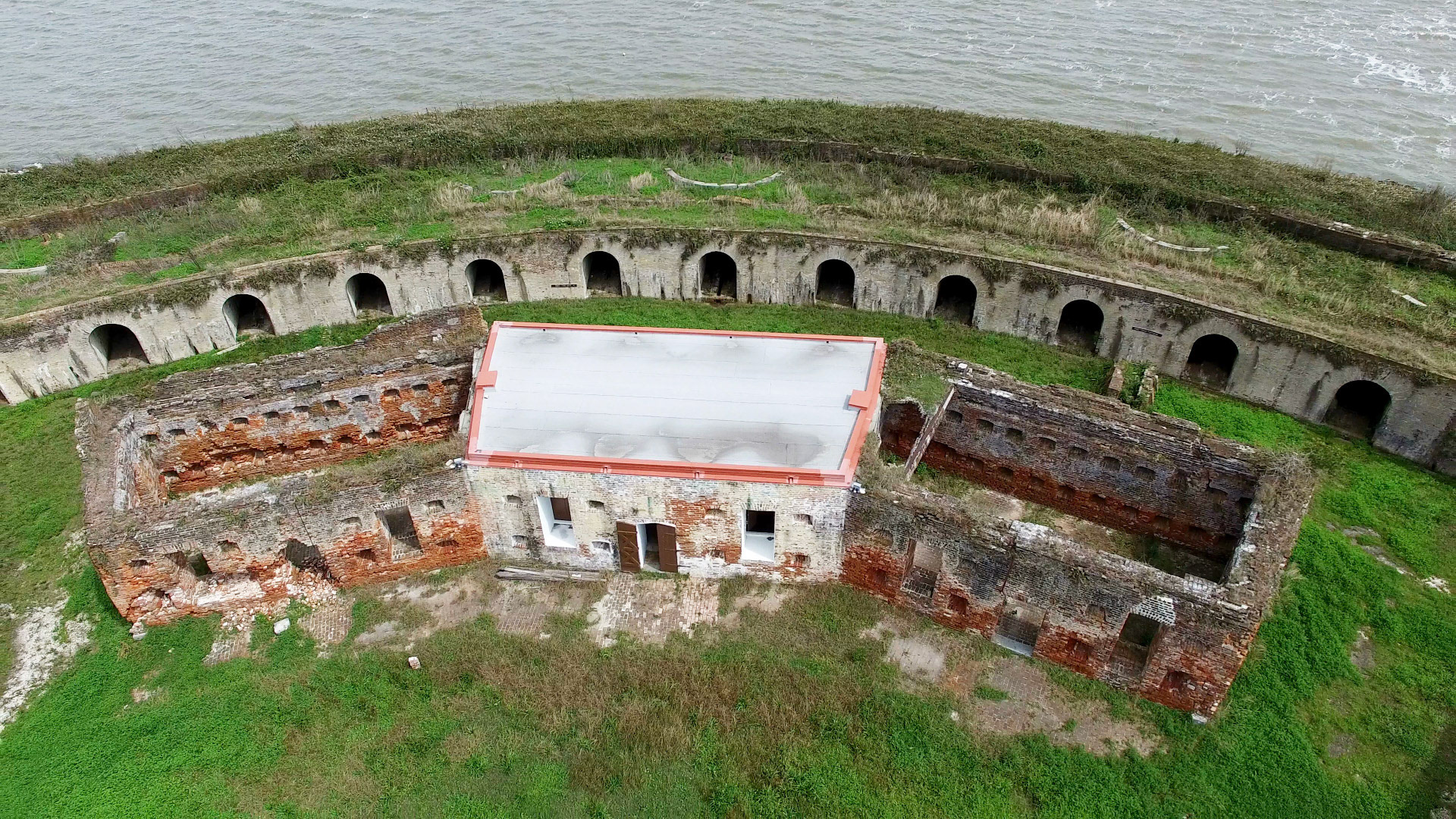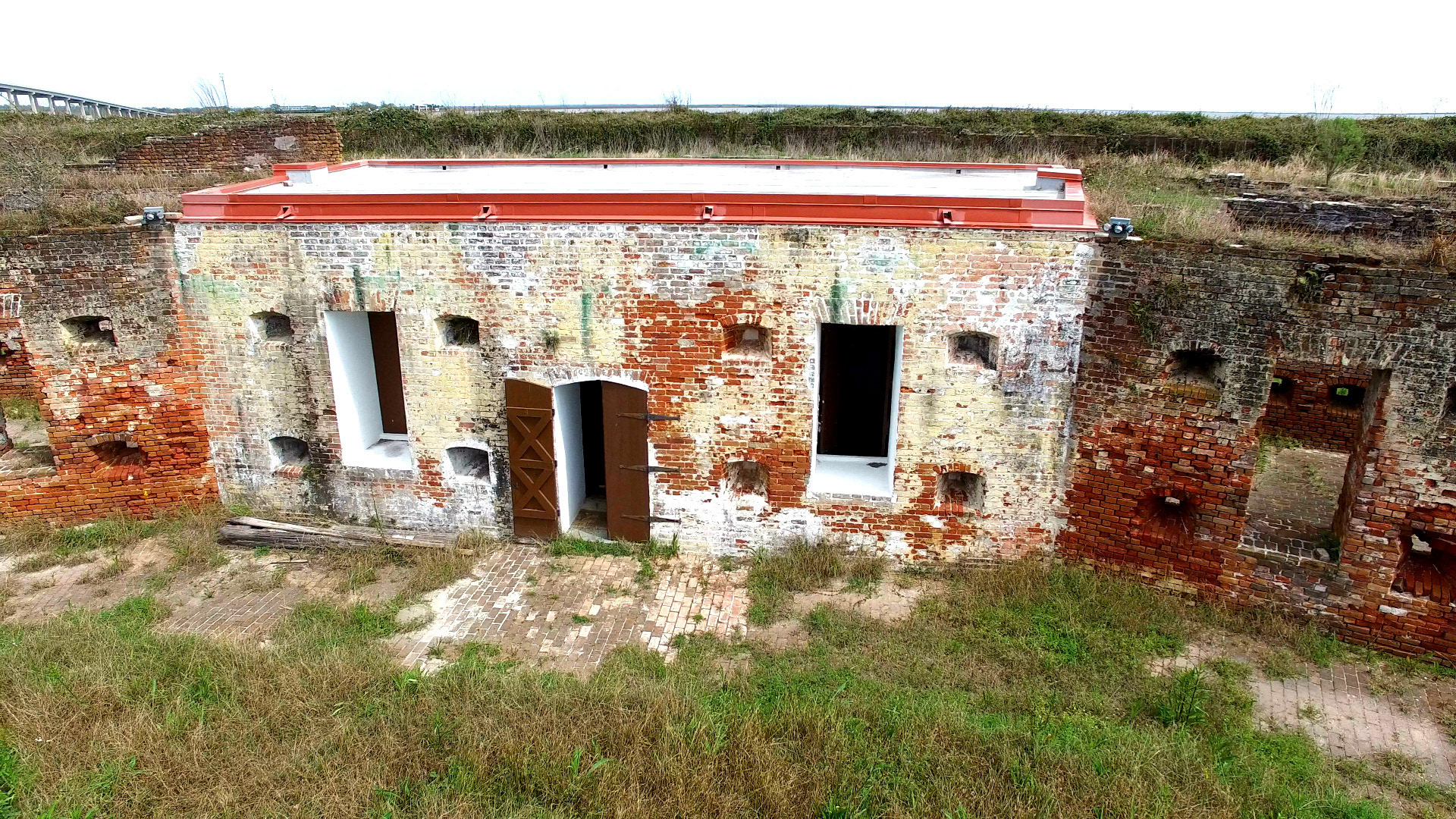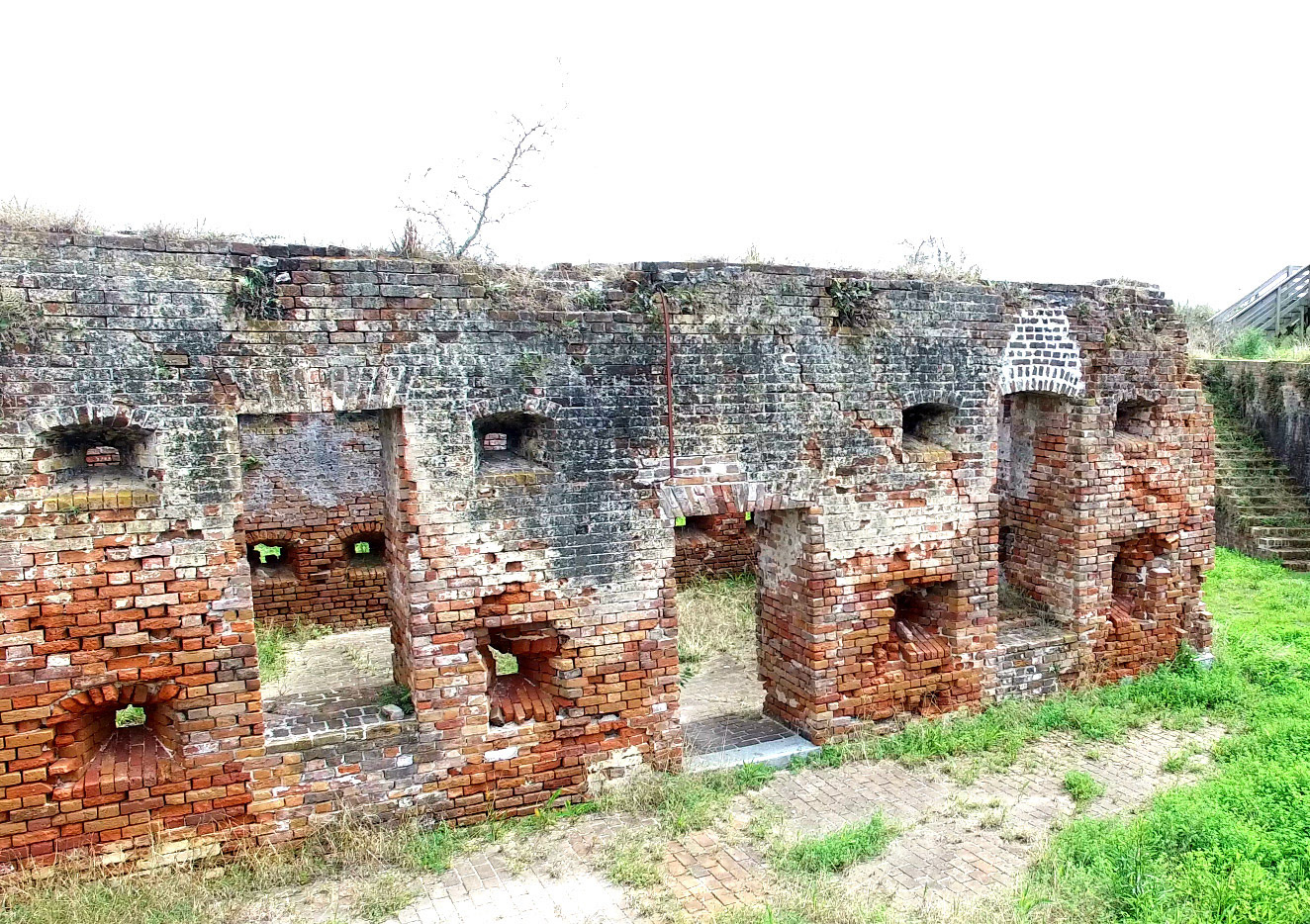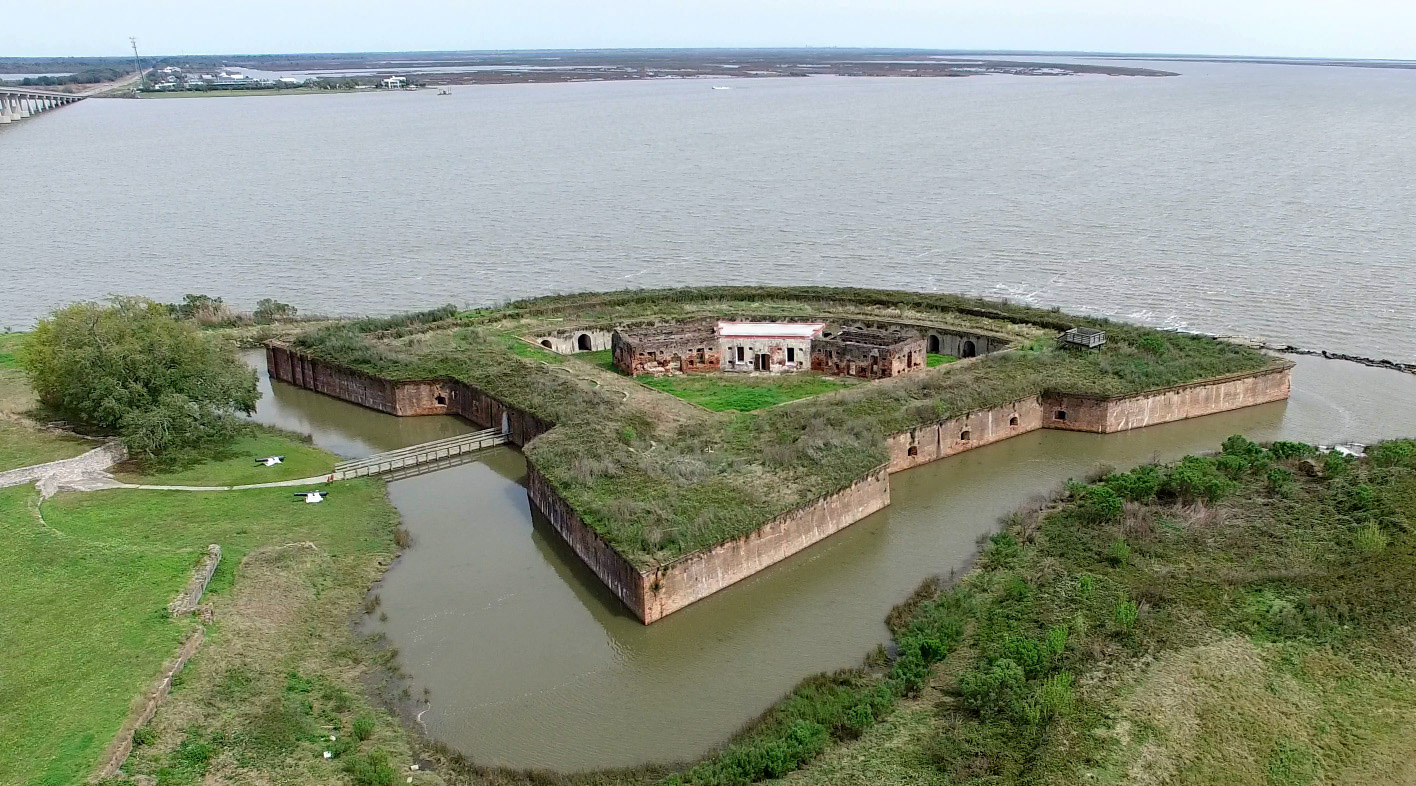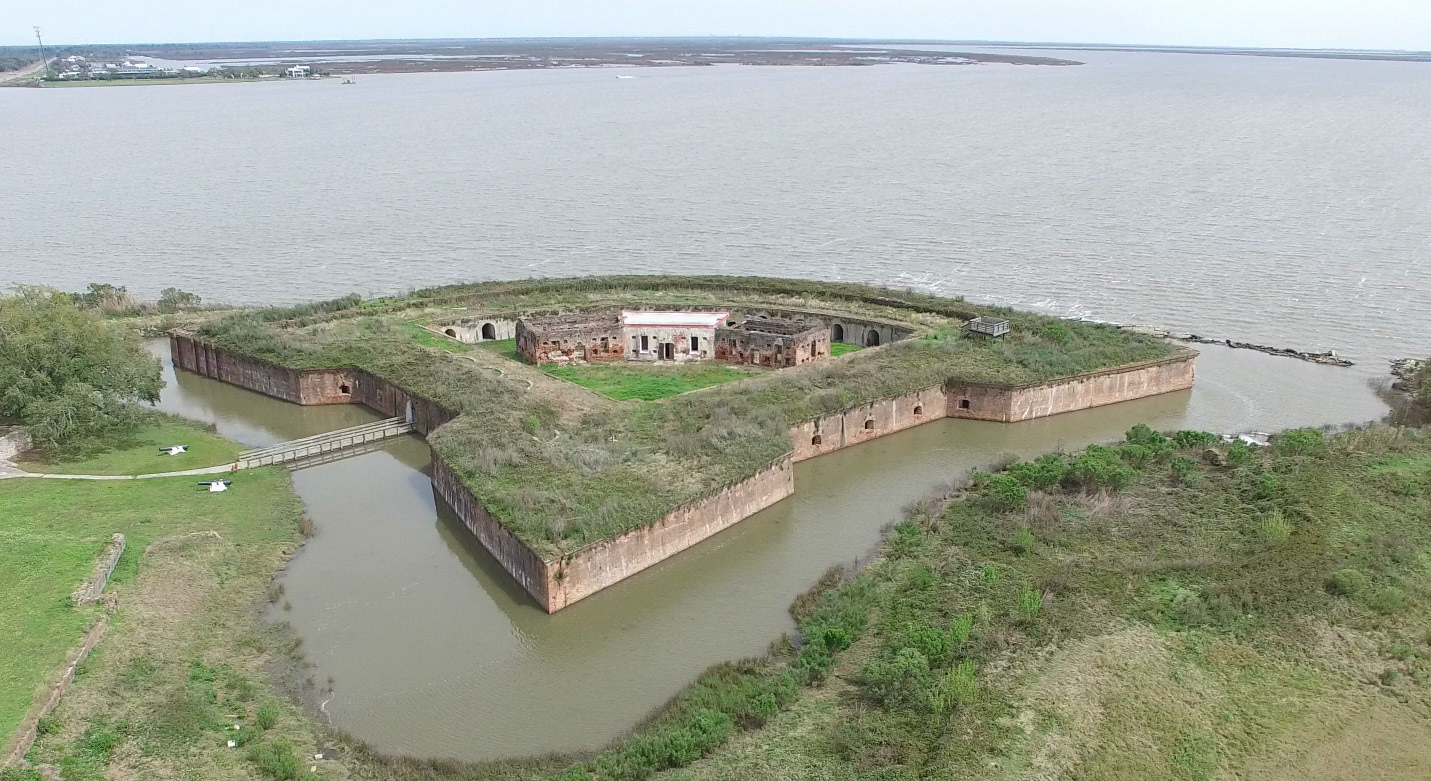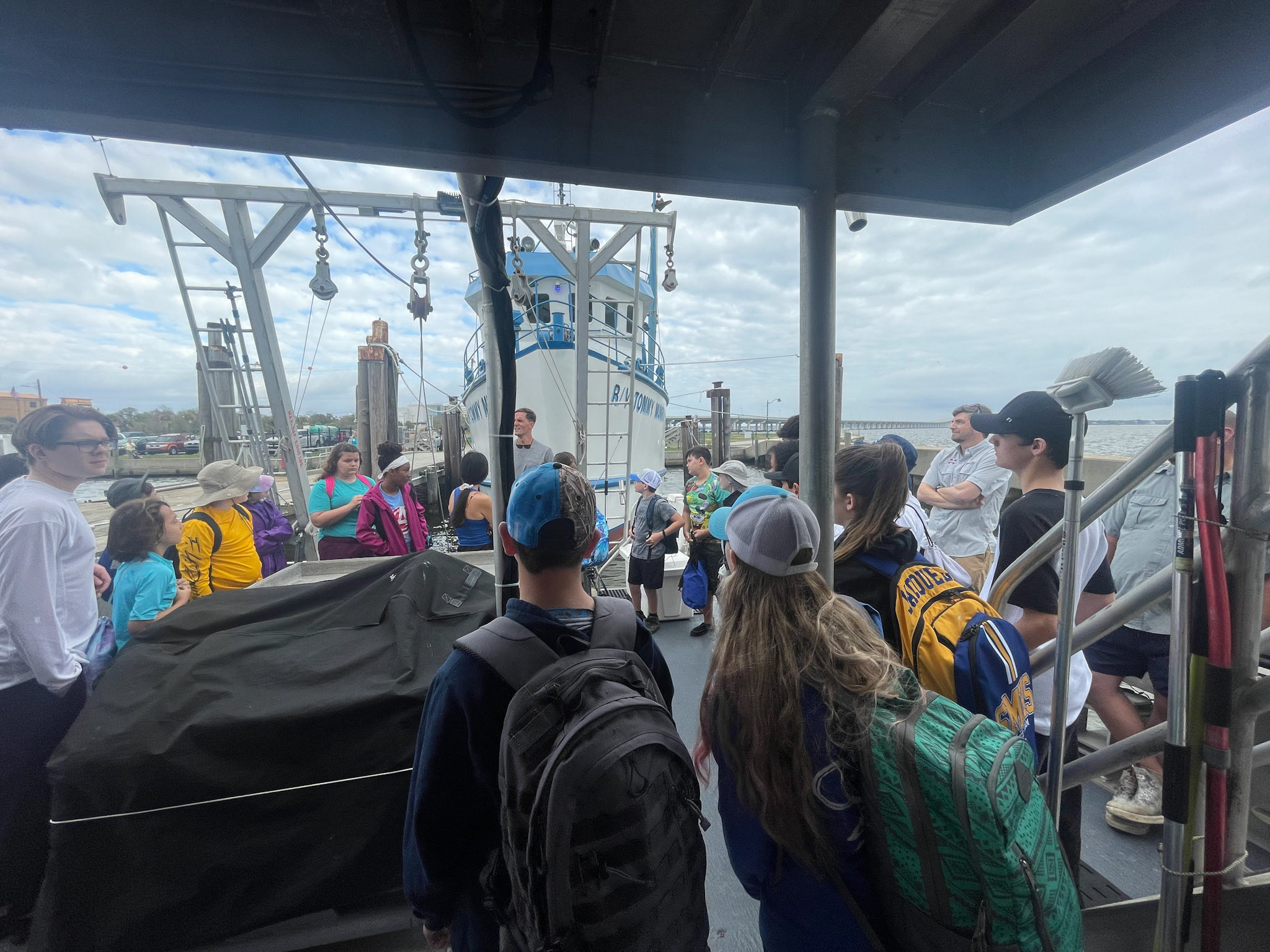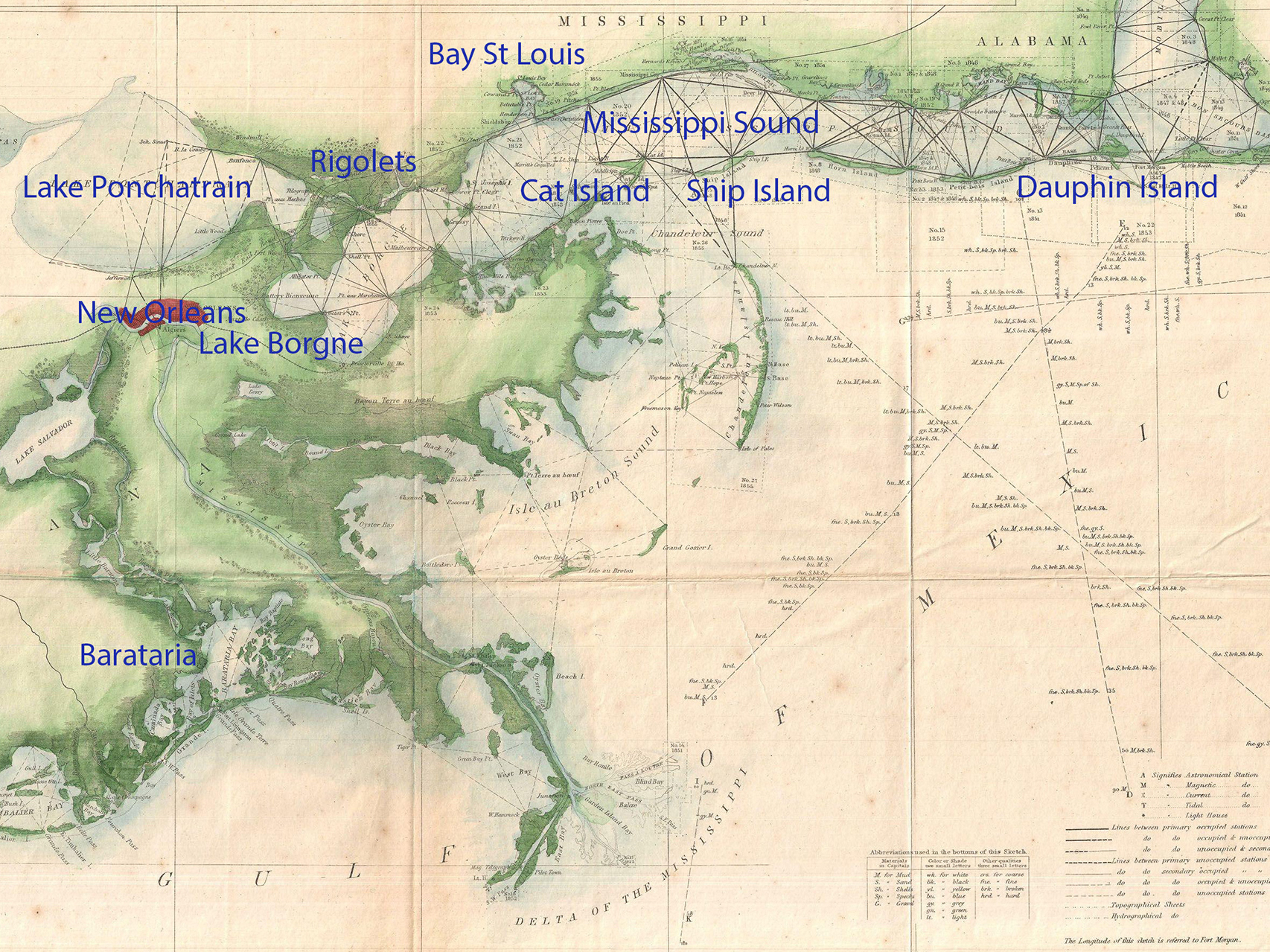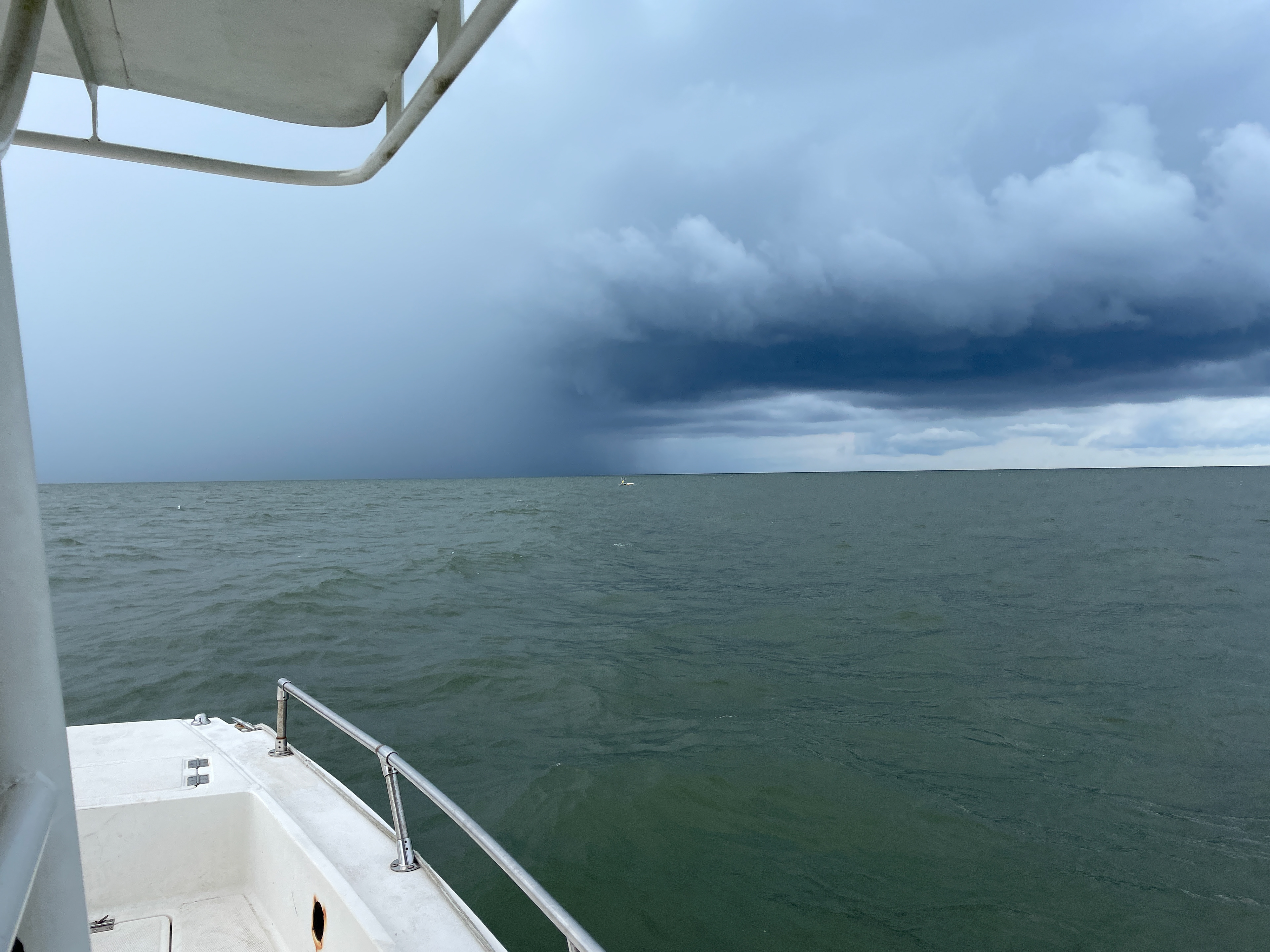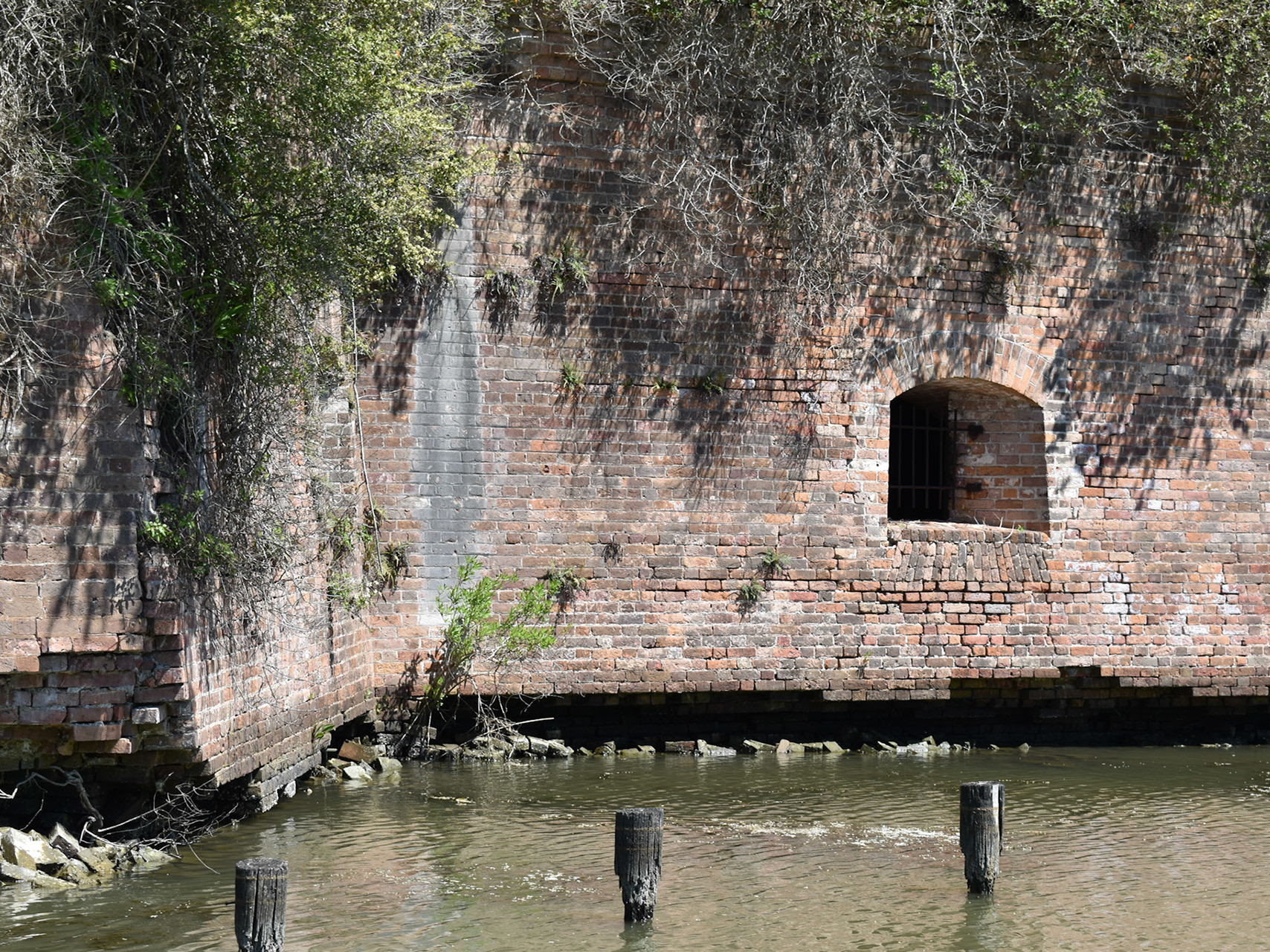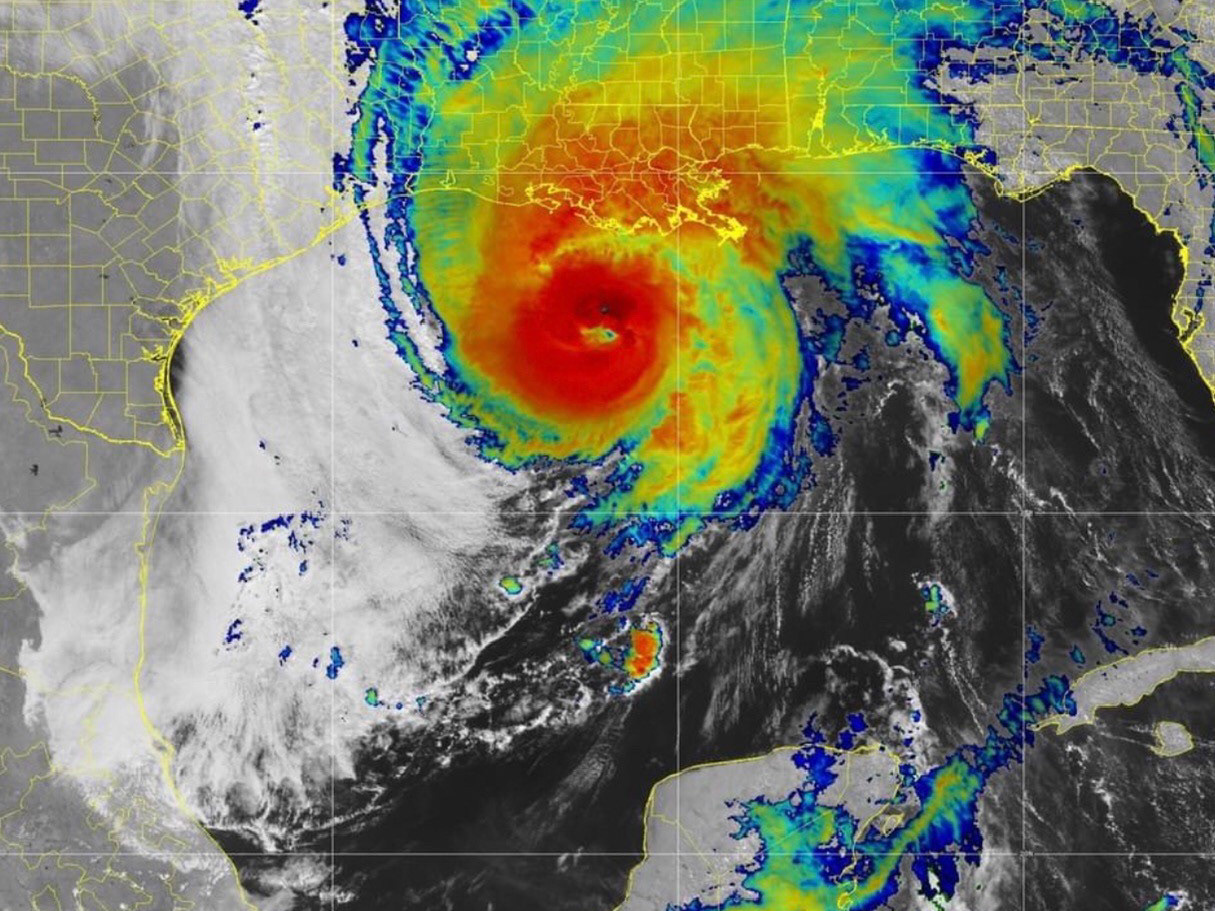Fort Pike, which was decommissioned in the 19th-century, was named after Brigadier General Zebulon Pike. The fortification, part of the third system, was built following the War of 1812 to guard the Rigolets pass in Louisiana. The fortification was established in 1819 to protect New Orleans and the Gulf Coast against British or other invasions of the United States.
Before Hurricane Katrina, the fort's structural integrity was already in decline. The storm surge of Katrina severely exacerbated the problems. Temporarily submerging the entire fort and destroying the adjacent state park buildings. The site briefly reopened in 2008, but, due to damage caused by Hurricane Gustav in 2008, the park was closed again but was scheduled to undergo extensive repairs and restoration work, however, following Hurricane Isaac in 2012, the fort was closed indefinitely pending repairs and debris cleanup. The fort was again temporarily re-opened to visitors following Hurricane Isaac but closed again in February 2015 due to state budget cuts.
During the War of 1812, the still powerful British Navy sailed up the Potomac River and, with little opposition, sacked Washington DC. This attack provided the US Government with the realization that the new nation was by all rights defenseless against any determined foe with respectable naval capabilities.
Following this conflict, US President James Madison (1751-1836) approved the design and implementation of the Third System of seacoast fortifications in 1816. Military leadership identified approximately 200 locations along the Atlantic and Gulf coasts as being in desperate need of fortification. New Orleans and its approaches were one of the first to receive the attention of the US Army's Corps of Engineers (A note that will become plainly evident when we visit Fort Proctor).
The design, a bastion fort or trace italienne... also sometimes referred to as a "Starfort" describes a fortification built in a style that initially evolved at a time when cannon dominated the battlefield. These type of fortifications were first described in the mid-15th century in Italy.
The design of the fort usually is a pentagon or hexagon with bastions at the corners of the walls. These outcroppings eliminated protected blind spots, called "dead zones," and allowed fire along the curtain from positions protected from direct fire. Many bastion forts also featured Cavaliers, which are raised secondary structures based entirely inside the primary structure. These can be seen in the UAS Images and video links below
There were many "starforts" as they were called built worldwide, in fact, Fort Wood, whose walls were repurposed as the base for "Lady Liberty" was a classic "starfort" design
Raw Overflight Footage can be Viewed at: https://www.youtube.com/watch?v=HGXeHk-9MsY
